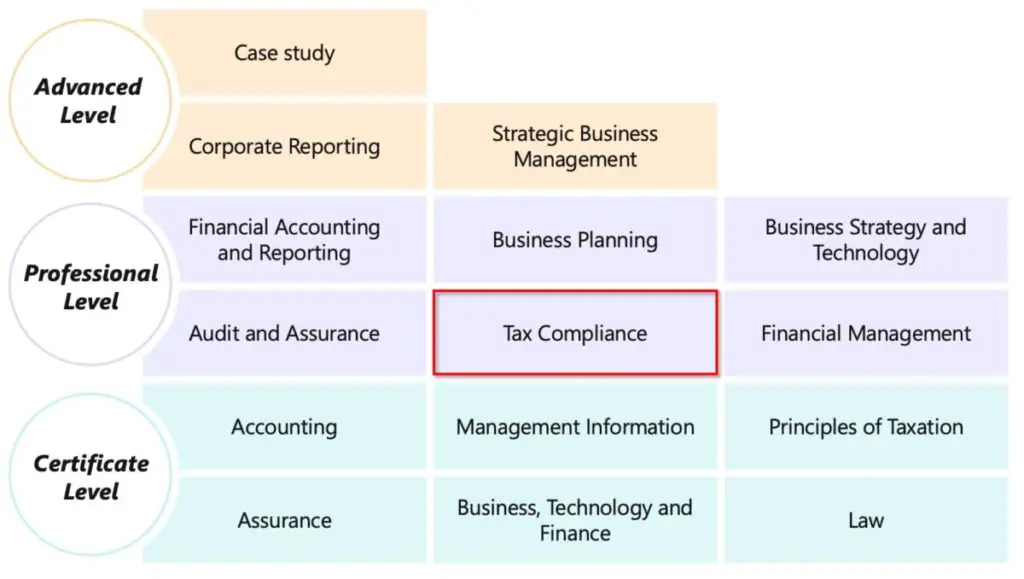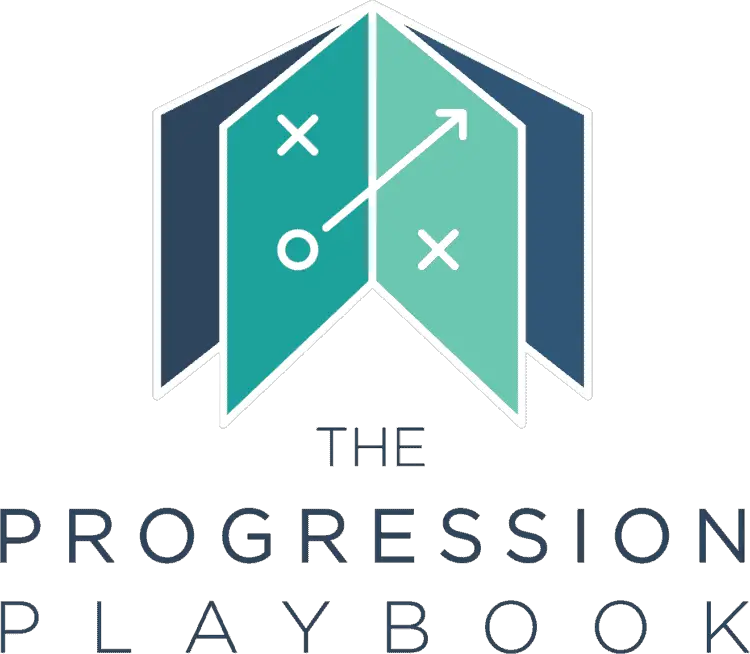The ACA Tax Compliance exam is typically the second tax-focused exam in the syllabus, directly building on the knowledge and skills learned during the certificate level ‘Principles of Tax’ exam. The pass rate for this exam was 81.9% in the most recent exam season which shows that this exam can pose problems if not taken seriously.
To pass the ICAEW ACA Tax Compliance exam, candidates should focus on question practice and understanding the various different taxes. Within the exam, the key priorities should be to stick to pre-planned timings, read the questions carefully and use the permitted text only when necessary.
Whilst most students agree that certain ACA exams are easy (like Business Strategy & Technology) and others are hard (Financial Accounting and Reporting) – the Tax Compliance exam seems to split opinion. For candidates with a good understanding of tax, including those who do tax for their day jobs, this exam will probably be quite comfortable. For others, it may be a challenge due to the breadth of content to learn.
With that in mind, I have created the below guide which should help anyone studying for the Tax Compliance exam to organise a revision and exam strategy and ultimately pass this exam.
How to pass the ACA Tax Compliance exam
Passing the ACA Tax Compliance exam will come down to doing a few key things well. Firstly – how well the candidate prepares via question bank practice and preparation of the permitted texts and secondly how well the candidate is able to perform on exam day.
Whilst both are as important as each other, performing well on exam day is the easier part. This will simply be a case of managing exam nerves (which should be much easier to do by this stage of the ACA qualification), managing the fatigue of taking a long exam (often on the same day as another professional level exam) and finally getting enough sleep leading up to the exam to be able to perform on exam day.
The difficult part is learning, revising and mastering the content. For most students, this will involve actively engaging with the tuition and practising questions repetitively. There is no silver bullet here – it’s simply a case of putting the work in and sticking to a smart plan.
Success in the preparation phase will come down to the below points:
- Listening intently to the tutor and actively engaging with exercises and questions. Speak up if you don’t understand a concept or method.
- Creating a realistic but thorough revision timetable that you can stick to and that will provide enough study hours to master the content whilst also leaving some time to relax.
- Pummeling the question bank and mock exams repeatedly and learning from mistakes when you make them.
- Devise a smart strategy for exam day.
You only need 55% to pass and this fact should be your best friend when it comes to this exam. If you manage to practice questions repetitively, get to grips with the permitted texts and new data analytics software, calculate and stick to preset timings and write as much as you can for each question, you’ll be in a great position to pass this exam.
ACA Tax Compliance exam – key information
All of the key information regarding the ACA Tax Compliance exam is summarised below:
| Factor | Result | Notes |
| Exam length | 2.5 hours | |
| Pass-mark | 55% | |
| Pass-rate | 81.9% | At the most recent sitting, 81.9% of candidates passed the exam. |
| Level | Professional | The exams are in 3 levels; Certificate, Professional or Advanced. See the image below. |
| Structure | 5 long questions (100%) | |
| Location | Any ICAEW-approved test centre | |
| CPL | Yes | It is possible to get a ‘Credit for Prior Learning’ (exemption) for this exam. |
| Open book? | Yes | Candidates can take ‘permitted texts’ into this exam. More on this below. |
| Related exams | Yes | This exam builds on the content within the ‘Principles of tax’ certificate level exam. |
How the ACA Tax Compliance exam is structured
The ACA Tax Compliance exam falls within the professional level as shown below.

The exam is made up of 5 long-form questions with all of the various taxes being tested discretely but with some overlap between related taxes such as inheritance tax and capital gains tax.
The single most important thing you can do on this exam is to get your timings right and spend the correct amount of time on each question and sub-questions. To do this effectively, you’ll need to calculate the correct amount of time to spend on each question (process shown below) and be highly disciplined in sticking to these timings. Even if you’re halfway through a sentence when your time for the question is up, move on!
So what’s the most efficient way of working out the time you should spend per question?
Step 1 – write down how long the exam is in minutes. We know the exam is two and a half-hour long. This converts to 150 minutes in total.
Step 2 – Take off 10 minutes from the total which is the time set aside to work out and write down your timings per question. This leaves 140 minutes of actual question-answering time.
Step 3 – We now know we have 140 minutes to answer questions worth 100 marks. This is 1.4 minutes (1 minute 24 seconds) per question.
Step 4 – Go through the exam script and for each question or sub-question, calculate the time per question. For example, if a question is worth 15 marks, you would give yourself 15 * 1.4 minutes = 21 minutes.
Step 5 – Once you have done this for each question, confirm the timings for each question sums up to 140 minutes in total so you know you haven’t gone wrong anywhere.
This may sound like a hassle but with practice, you can do all of this for an exam script in under five minutes.
Taking the time to do this and then being strict with yourself to stick to the timings is the single most effective thing you can do. This simple technique will make sure you apply a reasonable amount of time to each question and don’t fall victim to running out of time which is the reason many candidates fail this exam.
This is an important point – if any single question is taking you longer than the calculated time, move on! The single biggest reason people will fail this exam (other than not understanding the content) – is time management.
If you believe you have completed your answer to a particular question within the predetermined time, feel free to move onto the next one. You have just saved yourself a few minutes which can be put towards any question you have more to write for at the end.
The syllabus will cover:
- Ethics and law (5-10%)
- Indirect taxes (10-15%)
- Capital taxes (20-30%)
- Corporation tax (15-25%)
- Income tax and NIC (30-40%)
ACA Tax Compliance exam – revision strategy
With the exception of self-taught students, most of your revision time will be determined by your tuition provider.
For the Tax Compliance exam, revision or practice outside of the classroom should focus on the following items; question bank questions, mock exams, reviewing particular topics within the course notes and updating/reviewing your mistake notepad as outlined below.
In terms of how revision should be structured, my advice would be to complete a full long question, mark it and then note down improvements that could be made.
When studying, implement the Pomodoro technique (which is explained briefly in this Youtube video). This will maximise your productivity and help to avoid burnout and concentration lapses.
If it suits your studying style, consider joining a study group with one or two other students. I found this immensely helpful, not only does it help keep you accountable to study in line with your revision timetable, you and your study group can help cover each other’s weaknesses.
Beyond the above points, the most important thing is to listen and implement the advice of your tutors. They have likely taught this exam module several times and are well placed to advise on the best ways to revise and practice.
ACA Tax Compliance open-book and permitted text tips
Unlike the certificate level exams, the Tax Compliance exam allows students to bring in ‘permitted texts’ as laid out on the ICAEW website. This is slightly different from a full open-book exam which allows candidates to bring in any resources they like as the permitted texts are limited to certain publications.
For this exam, the permitted text is ‘Hardman’s Tax Rates and Tables’ which is a helpful resource as it allows candidates some breathing room when it comes to memorising tax rates and specific rules. My advice to candidates is to spend the time properly tabbing up this resource to make sure they can use it as efficiently as possible in the exam.
Overall, my advice would be to get to grips with the permitted text and understand how to best use it but don’t rely on it. For this exam, the permitted text should be limited to last resort territory either when you simply have no idea what to put for a question or at the end of the exam if you have some time to flesh out your earlier answers.
How to learn from your mistakes effectively
To make the most of your revision sessions, you need to be diligent in learning from your mistakes and making sure you don’t make the same errors repeatedly.
I’ve found using the ‘notepad method‘ particularly effective for this.
Here’s how it works – buy a nice new notepad and write ‘ACA Tax Compliance exam – mistakes’ on the front cover. Any time you make an error in mock exams, the question bank or the end of chapter questions within the course notes, write a note in your notepad explaining what the error was, why you made it, what the correct answer should be and a reminder to yourself about how this error can be avoided in the future.
At the start of each revision session, read through this notepad of mistakes and you’ll gradually stop making the same errors as you become more conscious of them.
ACA Tax Compliance exam – timings and strategy
As well as having a revision strategy, candidates should think about implementing a specific exam strategy to maximize their chances of success. This strategy should be based on three core factors: writing as much as possible for each question, being careful not to take too much time on any single question and ‘playing the game’ to get over 55%.
As discussed earlier, the key to success in this exam is being diligent with timings. For each question, multiply the number of marks by 1.4 minutes to calculate the total time to answer the question and then stick to this time.
By doing this, candidates will make sure they spend sufficient time answering each question. This is linked to the third factor which is that the pass-mark is only 55%. By leaving sufficient time for each question, candidates are able to have a good stab at every part of the exam which makes achieving the 55% pass mark much easier.

ACA Tax Compliance resources and past papers
Please use the links below for valuable resources (including past papers) to help pass the ACA Tax Compliance exam:
- ACA Syllabus Handbook – refer to page 63 for Tax Compliance.
- Details over closed book vs open book vs permitted texts
- Past paper – March 2021. Marking grid – March 2021.
- For other past papers and useful resources – click here.
How to tackle concepts you keep getting wrong
As with any exam, a certain proportion of the content will be challenging. It may even feel at times like you can’t understand a particular item no matter how much you read the course notes and practice questions.
If you find yourself in this situation and are beginning to get overwhelmed, here are my suggestions:
- Consider ignoring it. This will only work if it’s not a central concept. This may sound counter-intuitive but if for example, you are really struggling in one area and just can’t seem to get it, it may not be the worst idea to forget it. Remember, you only need 55% to pass the exam and this area is unlikely to make up more than 5% of the total points. Does it not, therefore, make sense to avoid spending hours trying to understand a very specific tax rule when that time could be spent on more useful revision?
- If the topic can’t be ignored – ask either your tutor or a classmate who does understand it for help. In my experience, both tutors and classmates are more than willing to explain a concept and sometimes a new perspective can help you understand something that was previously incomprehensible.
- Consider google-ing the topic. A lot of very specific questions are explained online on blogs, forums or Youtube videos which may help unlock your understanding.
Tips for exam day
I often use the metaphor of a boxer preparing for a fight for how candidates should prepare for the ACA exams. Both the pre-fight preparation and the fight-day itself are equally important. If you don’t prepare properly, you won’t be successful. Similarly, if you prepare well, but perform poorly on the day, you won’t be successful.
With this in mind, I’ve laid out a few tips to help optimise your exam day performance that worked consistently for me during my exam days.
Needless to say, being well prepared is crucial. It doesn’t matter how well you sleep the night before the exam or how dialled in your pre-exam ritual is if you don’t know the content. There is nothing that will help calm exam nerves to the extent that being over-prepared will.
As well as being well prepared on the exam content, it also pays off to be well prepared practically speaking. Things go wrong in exams so have contingencies planned. If you’re doing your exam from home as many are at the moment, have a backup plan if your wifi cuts out e.g. a mobile phone hotspot connection. Take an earlier train into the exam centre in case there are signal failures (which there seem to be most days).
My next tip may sound a bit like something your Grandmother would say but regardless – get a good night’s sleep for the week leading up to the exam. One good sleep does not make up for poor sleep every other night. Get your 7-8 hours per night. Believe me, this will have a bigger impact than another hour of revision late at night. The research is very clear that good sleep is crucial for memory retention which is a big part of all of the ACA exams.
Finally, a quick point on when is the right time to stop revising. My advice is to stop revising a few hours before you sleep on the night before the exam and relax for a few hours. Trying to cram material late on the night before the exam will probably not help and almost certainly make it more difficult to sleep.
Should you take your ACA exam exemption?
Some students will be exempt from certain exams due to the credit for prior learning (CPL) system. For students who have studied Accounting at university or have done similar qualifications in the past, certain ICAEW ACA modules will be a duplication of content. Rather than repeating an exam already passed, students can apply for a credit for prior learning and become exempt from the exam.
More information on ACA exam exemptions can be found here.
Whether students apply for and take exam exemptions is up to them but it’s worth noting the below advantage and disadvantage of doing so.
The big advantage is clear – students can save themselves significant study time and exam stress by taking an exemption and use that saved time for other exams they are not exempt from taking.
However, the disadvantage is that the ACA qualification is structured in tiers as discussed above. For example, students will take ‘Accounting’ at the certificate level, ‘Financial, Accounting and Reporting’ at the professional level and ‘Corporate Reporting’ at the advanced level with the knowledge and skills being built upon and compounded throughout.
This means if a student were to take an exemption from the Accounting exam for example – when it comes to taking the difficult Financial Accounting and Reporting exam, the underlying content will not be fresh in mind which may become a difficult obstacle to overcome.
As always, please remember I am an Accountant, but not your Accountant. In this post (and all of my others) I share information and oftentimes give anecdotes about what has worked well for me. However, I do not know your personal financial situation and so do not offer individual financial advice. If you are unsure of a particular financial subject, please hire a qualified financial advisor to guide you.
This article has been written by Luke Girling, ACA – a qualified Accountant and personal finance enthusiast in the UK. Please visit my ‘About‘ page for more information. To verify my ACA credentials – please search for my name at the ICAEW member finder. To get in touch with questions or ideas for future posts, please comment below or contact me here.
